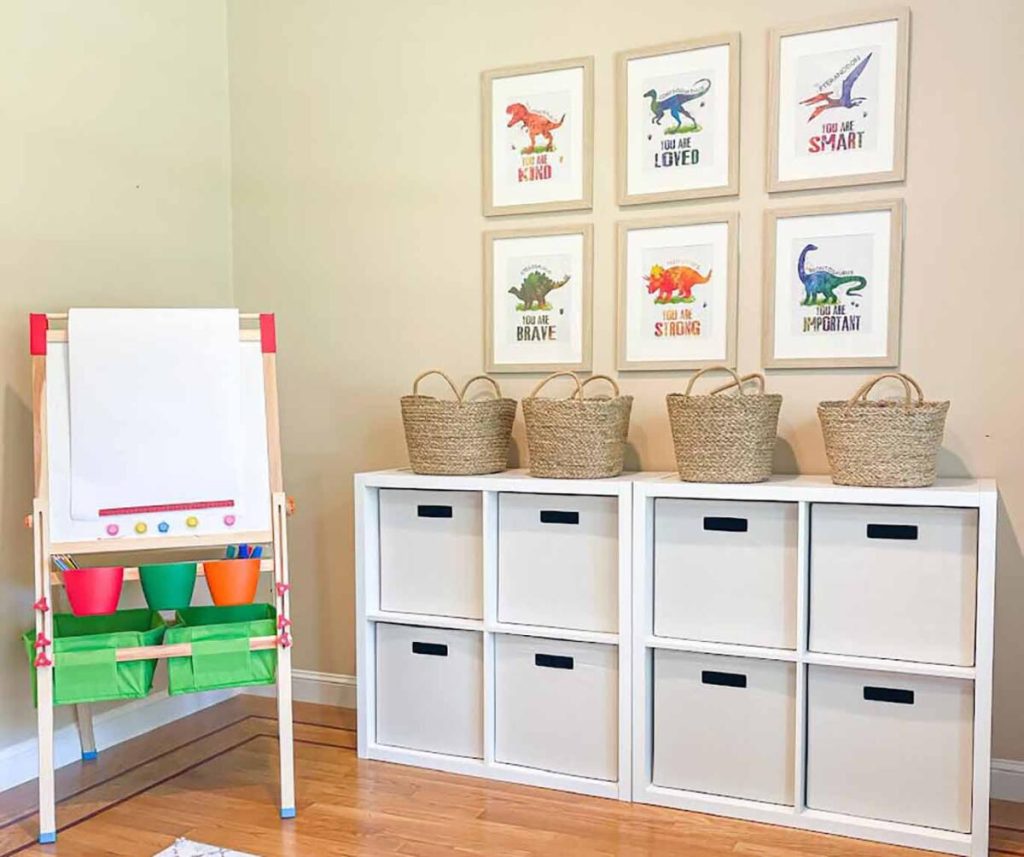Decluttering Strategies for Families: Organizing Shared Spaces and Encouraging Collaboration

Understanding the Challenges of a Cluttered Home
In today’s fast-paced world, families are often juggling numerous responsibilities—work, school, activities, and social commitments. As a result, their homes can become havens of clutter, which not only complicates day-to-day living but also impacts the overall emotional well-being of household members. In this context, it becomes crucial to implement effective decluttering strategies that not only facilitate organization but also foster a sense of community among family members.
Recognizing Unique Family Challenges
The concept of shared spaces poses distinct challenges for families. For instance:
- Multiple schedules: Each family member, from parents to children, usually has their own set of commitments. This can lead to a chaotic home environment where items are left strewn about due to the lack of time to clean up after one another.
- Varied interests: When each person has different hobbies, whether it’s sports, arts and crafts, or technology, household items can multiply quickly. For example, a teenager’s collection of sports gear may clash with a younger sibling’s mountain of art supplies, creating an overwhelming sense of disorder.
- Time constraints: Families often find that between work, school, and social engagements, they have little time left for household chores. This can make it easy for clutter to accumulate when everyone is too busy to engage in regular tidying.
Implementing Effective Decluttering Methods
To combat these challenges, families can adopt practical and sustainable decluttering techniques:
- Regular family clean-up sessions: Setting aside a specific time each week for a family-wide decluttering event can create a sense of accountability. Children learn the importance of maintaining their spaces, and parents can model good organizational habits. For instance, implementing a “Saturday clean-up day” could become a fun tradition where everyone collaborates.
- Establishing designated zones: By creating specific areas for each family member’s belongings, such as bins or shelves in shared rooms, everyone knows where to store their items. This not only minimizes confusion but also teaches children to take responsibility for their personal space.
- Incorporating donation routines: Establishing frequent donation drives encourages family members to evaluate their belongings critically. This practice not only reduces clutter but also instills values of generosity and empathy, as they give away items that are no longer needed to help those in need.
The Benefits of a Proactive Approach
Adopting a proactive approach to decluttering not only enhances physical spaces but also builds teamwork and cooperation among family members. When families work together, they build stronger bonds and create an inviting atmosphere that is conducive to relaxation and well-being. By exploring various decluttering strategies, families can not only transform their homes but also their relationships with each other. A peaceful and organized home environment sets the stage for better communication and harmony, ultimately reflecting the family’s values and commitment to supporting one another.
DISCOVER MORE: Click here to unlock the benefits of free time

Collaborative Decluttering: Engaging Everyone in the Process
When addressing the clutter in a family home, it’s imperative to remember that organization is a collective effort. By involving all family members in the decluttering process, not only do parents ensure that shared spaces remain tidy, but they also cultivate essential life skills in their children. This collaborative approach transforms decluttering from a mundane chore into a family bonding experience.
Establishing a Clear Decluttering Framework
To create an effective strategy for decluttering shared spaces, families can establish a framework that makes the process efficient and enjoyable:
- Set Clear Goals: Begin by identifying specific areas in the home that need attention. It could be the living room, kitchen, or even each child’s bedroom. Clear goals help streamline efforts and motivate the family to stay focused.
- Assign Roles: Allocate tasks based on individual strengths and preferences. For instance, older children might be tasked with sorting through their belongings, while younger siblings could assist with organizing toys. By assigning roles, everyone has a purpose in the process.
- Create a Sorting System: Implementing a sorting system—like “keep,” “discard,” and “donate”—helps families efficiently categorize items, making the decision-making process easier. This structured approach can speed up the decluttering process while teaching children how to assess their belongings critically.
Encouraging Positive Attitudes Towards Clutter Management
Fostering a positive mindset about decluttering can significantly impact how children view their possessions. Instead of seeing it as a chore, families can turn it into a rewarding activity. Here are some strategies:
- Celebrate Progress: Acknowledge each achievement during decluttering, whether it’s a single organized shelf or an entirely cleared space. Celebrating these small wins reinforces a sense of accomplishment and motivates continued effort.
- Lead by Example: Parents can model positive behavior by actively participating in decluttering and demonstrating how they manage their belongings. Children are likely to mimic these habits, fostering accountability and responsibility.
- Create a Fun Atmosphere: Incorporate music, engaging games, or even friendly competitions to make the decluttering process enjoyable. A little creativity can transform a tedious task into a lively family event.
A Lasting Impact on Family Dynamics
Ultimately, the journey of decluttering shared spaces is about much more than just achieving a tidy home; it’s about building a culture of collaboration and mutual respect within the family unit. As each member engages in this harmonious endeavor, they not only learn the importance of organization but also strengthen their relationships, creating a supportive environment where everyone thrives. By adopting these decluttering strategies for families, households can cultivate not just physical order, but also emotional and relational stability, paving the way for a more joyful living experience.
| Category 1 | Category 2 |
|---|---|
| Effective Storage Solutions | Utilizing multifunctional furniture, bins, and shelves can significantly reduce clutter. |
| Family Collaboration | Engaging all family members in organizing tasks fosters teamwork and accountability. |
In the journey of decluttering shared spaces, it’s essential to adopt effective storage solutions that maximize available space. Multifunctional furniture, such as ottomans with storage compartments or convertible sofas, not only provide comfort but also serve as hidden storage options. Bins and shelves strategically placed in common areas encourage organization, making it easier to maintain a tidy environment. Furthermore, promoting family collaboration during decluttering efforts brings the family unit together. Setting aside time for joint organization tasks can create a sense of teamwork and leadership among family members. When everyone participates, not only do members feel more invested in their shared spaces, but they also learn valuable organizational skills. The ability to work together in creating a harmonious living environment can have lasting positive effects on family dynamics. Discovering these strategies can enhance not only your living space but also your familial relationships.
DISCOVER MORE: Click here for insights on prioritizing tasks
Implementing Sustainable Organization Habits
Once families have initiated the decluttering process, it’s essential to implement strategies that maintain a sense of order long-term. Establishing sustainable organization habits can prevent clutter from reaccumulating and keep the household environment pleasant. Here are several effective methods:
- Regular Decluttering Sessions: Designate a specific day each month for a family decluttering session. This routine event creates a habit of periodically reassessing possessions and ensures that any new clutter is quickly managed. Frequent touchpoints help maintain an organized environment and keep family members engaged.
- Utilize Storage Solutions: Invest in versatile storage solutions that suit the needs of shared spaces. Using bins, baskets, and shelving can help compartmentalize items, making them easy to find and return after use. Labeling these storage containers not only enhances accessibility but also teaches younger family members the importance of returning items to their rightful places.
- Adopt the One-In, One-Out Rule: Encourage family members to follow the “one-in, one-out” rule, where any new item brought into the home must replace an existing item. This practice promotes mindfulness about consumption and helps control the growth of clutter, ultimately aiding families in being more selective about their belongings.
Creating a Family Action Plan for Decluttering
Involving everyone in the family in creating a personalized decluttering action plan can enhance accountability and commitment. A family action plan outlines steps to maintain organization while engaging all members in the process:
- Discuss Individual Needs: Hold a family meeting to discuss each member’s needs when it comes to storage and organization. Different perspectives often reveal unique solutions that might improve shared spaces. For example, kids might suggest arts and crafts stations, while adults may want dedicated areas for work or hobbies.
- Set Up a Family Calendar: Create a shared family calendar that allocates specific times for organizing, cleaning, and decluttering. Marking these tasks on the calendar serves as a visual reminder and holds everyone accountable.
- Establish Rules for Shared Spaces: Define clear rules for shared spaces that everyone agrees to follow. These rules might include restrictions on how many toys can be out at once or guidelines for cleaning up after activities. Consistent practices help instill communal responsibility and encourage children to consider how their actions affect others.
Leveraging Technology: Digital Solutions for Decluttering
In today’s digital world, families can take advantage of technology to aid in their decluttering efforts. There are many applications and online resources designed to streamline the organization process:
- Digital Inventory Tools: Use inventory management apps to create a visual record of household items. These tools can help families keep tabs on possessions and identify items they no longer use or need, which can facilitate easier decision-making during decluttering sessions.
- Virtual Assistance: Consider utilizing virtual organizing services that guide families through the decluttering process via video calls. These services can offer personalized advice and an outsider’s perspective, which can be especially valuable when tackling larger spaces or emotionally charged possessions.
- Online Donation Platforms: Several websites and apps facilitate easy donations by connecting families with local charities. Encourage children to explore these platforms, fostering a sense of community responsibility and encouraging the act of giving.
By implementing these decluttering strategies for families focused on sustainable habits, personalized planning, and technology, families can create a cohesive, organized environment that benefits everyone. This collaborative approach not only reduces clutter but strengthens family bonds and develops valuable organizational skills for children, ensuring that shared spaces remain functional and enjoyable for all.
DISCOVER MORE: Click here to declutter your devices
Conclusion: Creating Harmony through Decluttering
In conclusion, mastering decluttering strategies for families is more than just organizing shared spaces; it’s about fostering a collaborative environment where every family member takes ownership. By establishing regular decluttering sessions, utilizing smart storage solutions, and engaging children in the process, families can effectively manage clutter and create a sense of harmony in their home. Incorporating technology, such as digital inventory tools and virtual organizing services, further enhances this journey, making it easier to maintain an organized living space.
This collective effort not only contributes to a tidy environment but also nurtures essential life skills like responsibility, teamwork, and mindful consumption in children. Through open discussions and personalized action plans, families can discover creative solutions to their organizational challenges, fostering an ethos of cooperation. Ultimately, a well-organized home cultivates a positive atmosphere where family bonds can flourish, supporting emotional well-being and reducing stress.
As families embark on this decluttering journey together, they not only declutter their physical spaces but also create lasting memories and strengthen their relationships. By continuously adapting these strategies, families can ensure that their shared spaces remain not only functional but also joyful and welcoming for every member. Now is the time to embrace the challenge of decluttering—transform your home today and enjoy the benefits of a more organized, harmonious family life.


